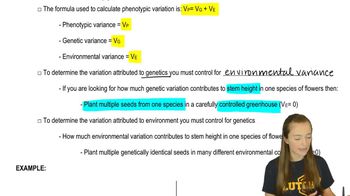Which of the following traits would you expect to be inherited as quantitative traits?
Coat color in dogs
 Verified step by step guidance
Verified step by step guidance Verified video answer for a similar problem:
Verified video answer for a similar problem:



 7:56m
7:56mMaster Interacting Genes Overview with a bite sized video explanation from Kylia
Start learning